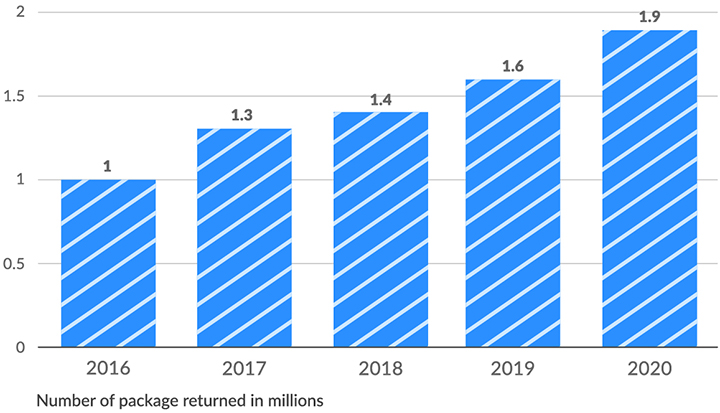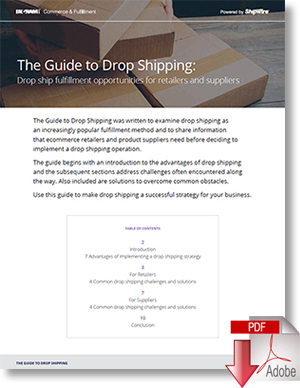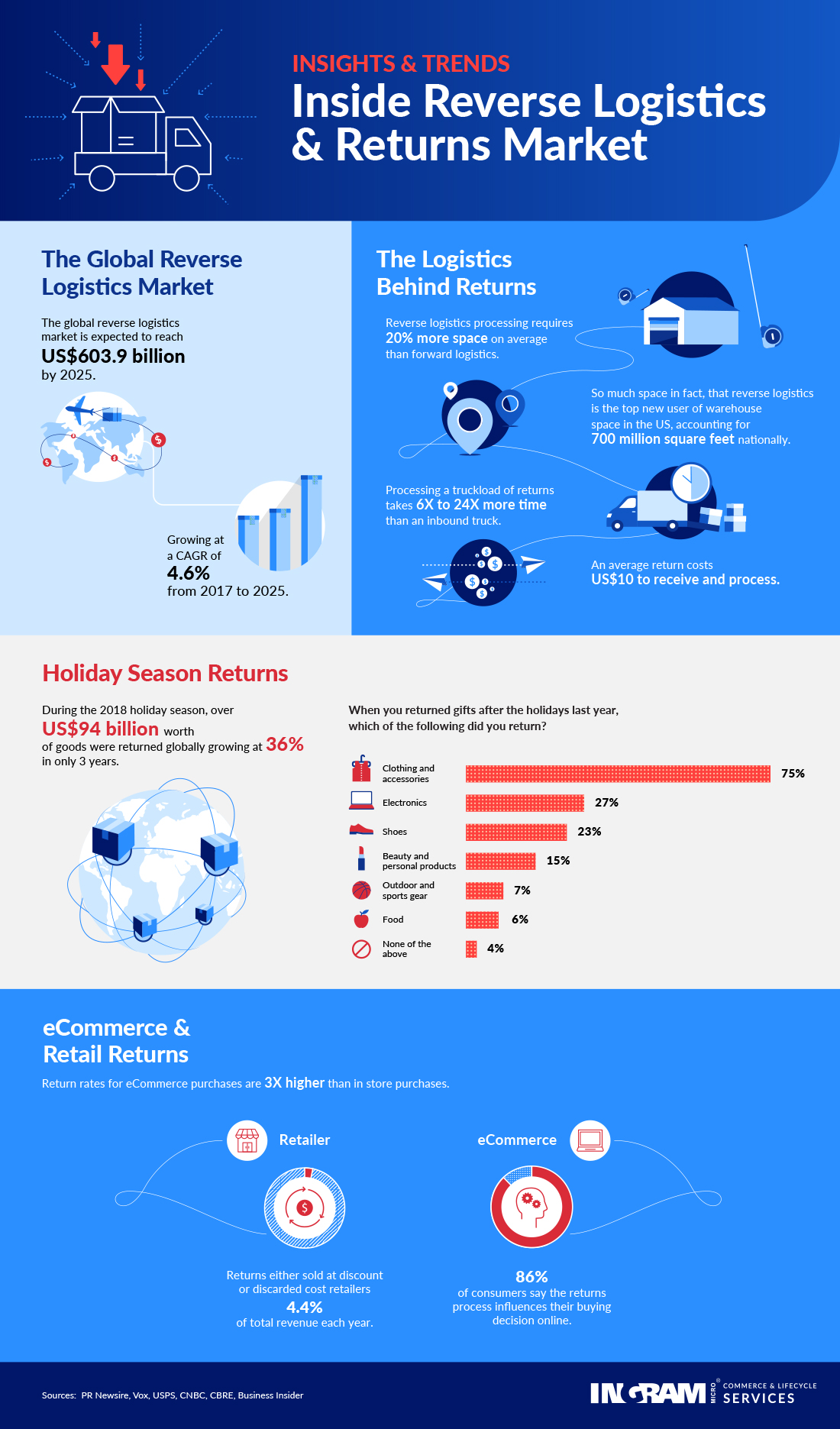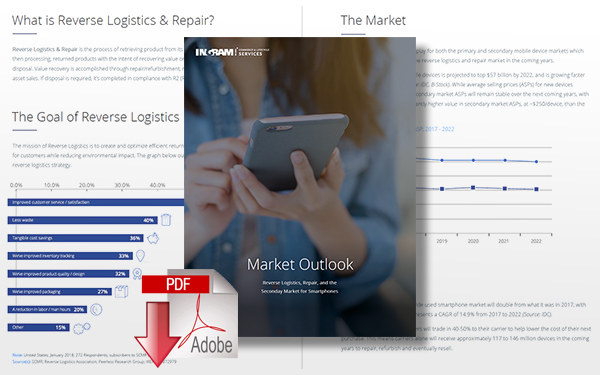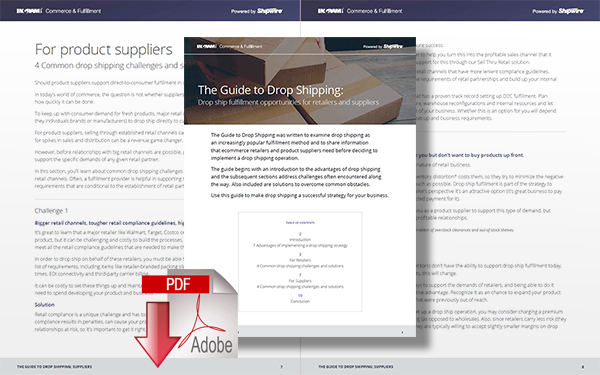Reverse Logistics & Returns Business for Ecommerce Sellers
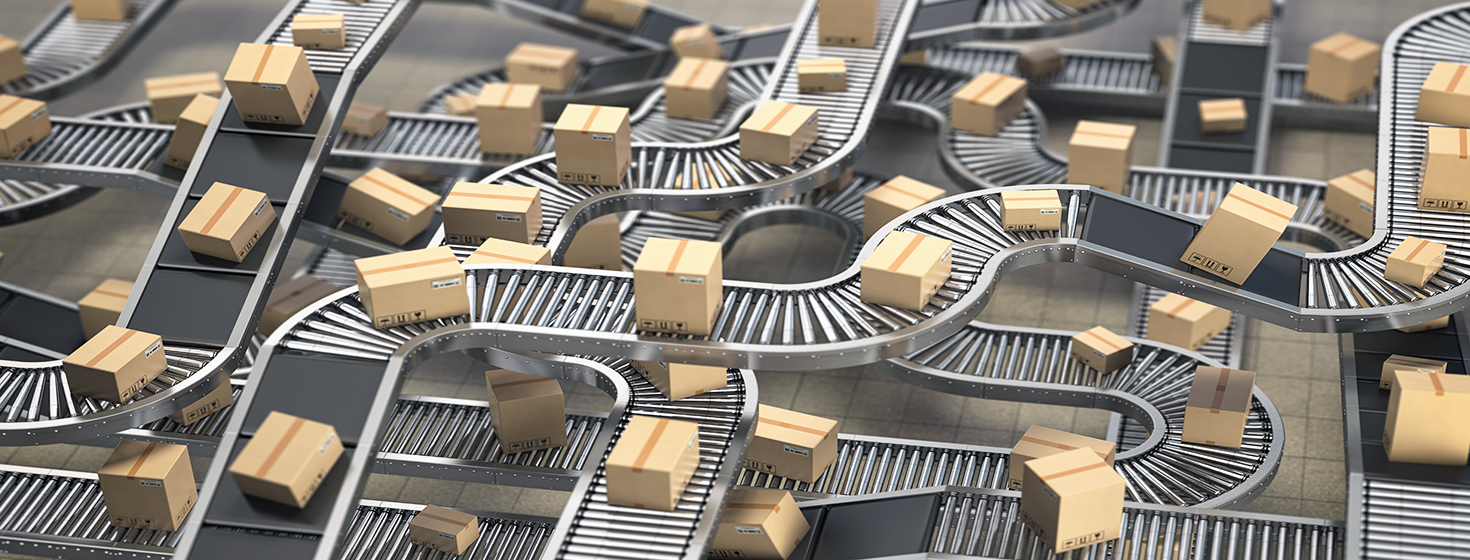
Ecommerce is at an all-time peak with no indication of slowing down, and with consumers spending more money online than in stores, online brands and retailers are experiencing high return rates.
The Rise of Returns
Return rates in traditional brick-and-mortar stores are relatively low - under 10 percent - which makes sense because shoppers are able to touch, try on, and assess a product before purchasing them.
However, ecommerce return rates are estimated to be nearly 30% in some categories and are on the rise due to the popularity of customer-friendly return policies.
Reuters stated that UPS estimated that it processed 1.9 million Christmas returns for U.S. retailers on National Returns Day 2020, equating to a 26% year-over-year increase.
Given the high rate of ecommerce returns, online brands and retailers are exploring how to turn them into a business opportunity, which requires reevaluating traditional reverse logistics operations.
Number of packages returned in the U.S. on National Returns Day, 2016 to 2020 (in millions)
If They Are Happy, Then You’ll Know It (They’ll Buy More)
Rising customer expectations are the driving force behind the evolution of ecommerce, and they’re demanding that everything be easier, cheaper, and faster.
Invespcro estimates that 67% of online shoppers check a store’s returns policy before purchasing and 92% will buy something again if returns are easy.
The power of a customer-friendly returns policy and process is huge when it comes to sales, as it extends feelings of trust and concern for customers’ satisfaction that are otherwise hard to convey virtually.
By creating this effect, stores drive brand loyalty, inspire repeat purchases, and gain promoters. One way retailers are making their returns processes more appealing is through omnichannel returns - allowing customers to order online and offering them various options for completing returns.
Pop-up return locations, accepting in-store returns, partnering with carriers to offer pre-paid return labels within a purchase, the option to drop-off at carrier hubs where labels can be printed or QR codes can be scanned, and even doorstep pick up are some of the many convenient choices consumers may encounter these days.
Seize the Moment to Sell, Sell, Sell
Since returns require that shoppers again interact with a brand, brands can leverage the opportunity to promote more sales.
Much like handling returns in-store (during which time shoppers may walk past a store aisle or approach a counter where more products are on display), initiating an online return places customers back into a virtual environment where they can observe further deals. In summary, while free returns beget more returns, they also encourage more sales.
Balancing Customer Appeal with Business Needs
While every business wants to create happy customers, it’s only natural (and responsible) to be concerned about the cost of making returns easy.
There is a price for everything, and if your customers are getting “free” returns, you’re paying for them.
Fortunately, you have some options. By setting boundaries and only offering free return shipping on purchases over a designated threshold, you can effectively motivate larger sales to balance the cost of return shipping. You can also bake the cost of returns into your retail prices. And by offering free in-store returns, you cut out the cost of return transportation which is expensive and always on the rise.
Behind the Scenes
From a logistics perspective, managing returns requires the ability to sync inventory levels across all warehouses and seller platforms.
It also opens up the opportunity of reverse logistics as a point of refurbishment and resale through other channels.
Effective returns management in ecommerce requires technology, real-time synchronization of inventory and order management, and the ability for a customer service agent to identify when a return has been received into a warehouse and/or when a replacement order has shipped.
Technology plays a big role in the logistics supply chain, especially with regard to omnichannel fulfillment and reverse logistics. Partnering with third-party logistics providers (3PLs) that operate in your geographic area and offer complete logistics solutions including returns management and efficient warehouse management systems is key to your success.
Smart brands and retailers are taking steps to make returns a business opportunity. If returns, forward, or reverse logistics are a pain point for your business, check out the solutions Ingram Micro Commerce & Lifecycle Services has to offer.
Related Resources
Reverse Logistics, Repair, and Secondary Market for Smartphones
This market outlook details how the secondary market for mobile devices is growing faster than the primary market and is projected to top $57 billion by 2022, and how they are increasing demand for reverse logistics and repair solutions. Download Now!
Guide to Drop Shipping
In this report, learn common drop shipping hurdles and possible solutions to overcome them, and learn about our plug and play EDI solutions to have you set up in weeks, not months. Download Now!
More Resources from Ingram Micro Commerce & Lifecycle Services
Article Topics
Ingram Micro Services News & Resources
Reverse Logistics, Repair, and Secondary Market for Smartphones Reverse Logistics & Returns Business for Ecommerce Sellers Guide to Drop Shipping Virtualized Fulfillment Program Optimizes Distribution across Retail and Marketplace Channels China’s HNA Group Bolsters Logistics Arm with $6 Billion Ingram Micro AcquisitionLatest in Transportation
A Look at Baltimore’s Key Bridge Collapse—One Month Later Baltimore Continues Bridge Recovery With Opening of New Channel How Shippers Can Prep for Hurricane Season UPS Struggles in First Quarter With Steep Earnings Decline FedEx Announces Plans to Shut Down Four Facilities The Two Most Important Factors in Last-Mile Delivery Most Companies Unprepared For Supply Chain Emergency More Transportation

